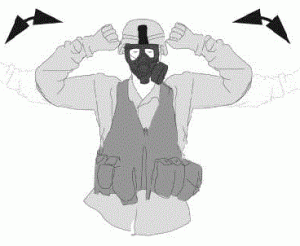Under ordinary circumstances, the U.S. Army relies on high-speed digital communications. But sometimes that is not an option, and soldiers must revert to more primitive methods.
“When electrical and/or digital means of communication are inadequate, or not available,” a new Army publication explains, messages may be transmitted “through the use of hand-and-arm signals, flags, pyrotechnics, and other visual aids.” Many of those alternate communication methods are described in Visual Signals, U.S. Army Training Circular TC 3-21.60, March 2017.
So, for example, “To signal ‘chemical, biological, radiological and nuclear attack,’ extend the arms and fists. Bend the arms to the shoulders. Repeat. (See figure 1-16.)”

Of course, hand and arm signals have limitations. For one thing, they may be misunderstood.
“Visual signals are generally contextual in nature. For example, the hand-and-arm signal for ‘take cover’ and ‘slow down’ are similar in their perspective movements, however the situation in which each is given is completely different.”
Also, “The range and reliability of visual communications are significantly reduced during periods of poor visibility and when terrain restricts observation.”
Finally, visual or gestural communications “are vulnerable to enemy interception and may be used for deception purposes,” the new Army publication said.
The FY2026 National Defense Authorization Act (NDAA) paints a picture of a Congress that is working to both protect and accelerate nuclear modernization programs while simultaneously lacking trust in the Pentagon and the Department of Energy to execute them.
For Impact Fellow John Whitmer, working in public service was natural. “I’ve always been around people who make a living by caring.”
While advanced Chinese language proficiency and cultural familiarity remain irreplaceable skills, they are neither necessary nor sufficient for successful open-source analysis on China’s nuclear forces.
To maximize clean energy deployment, we must address the project development and political barriers that have held us back from smart policymaking and implementation that can withstand political change. Here’s how.